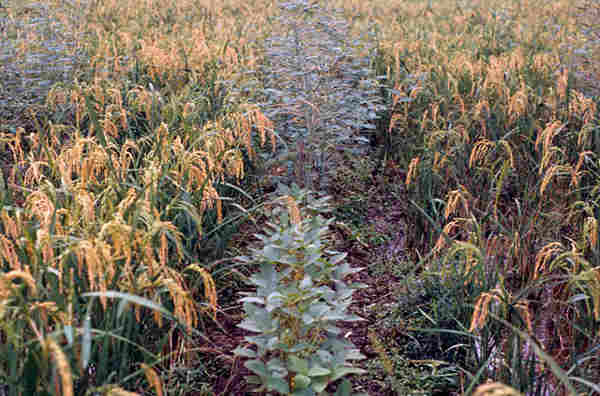This is the fourth post in Food Tank’s series on World Water Day, part of the United Nations International Year of Water Cooperation, which will profile top strategies for reducing water waste and water consumption. Today’s focus is on farmers and highlighting practices that they can use to help reduce water consumption and waste.
According to GRID-Arendal, agriculture covers 40 percent of the Earth’s surface, with 16 million square kilometers (about the size of South America) used for cropland, and 30 million square kilometers (about the size of Africa) used for livestock. But as the global population continues to rise to an expected 9 billion by 2050, experts predict that we’ll need at least another 170 million acres of farmland to meet demand.
Here are the top six farming practices proven to be effective for reducing water use and water waste:
6: Using intercropping, agroforestry, and cover crops
Soil health is critical to water conservation. Diversifying farms by including cover crops, planting trees on farms, and intercropping (planting complementary crops in the same field) can help keep nutrients and water in the soil. These practices can protect plants from drought and make sure that every drop of water from rain or irrigation can be used.
5: Implementing micro-irrigation
With around 60 percent of water used for irrigation wasted, irrigation practices can be to blame for a lot of water loss. Alternate methods such as drip irrigation can be more expensive to install, but research from the International Fund for Agricultural Development (IFAD) and the International Center for Agricultural Research in the Dry Areas (ICARDA) shows they can also be 33 to 40 percent more efficient, carrying water or fertilizers directly to plants’ roots.
4: Improving rainwater harvesting
Rainwater is critical to global agriculture. Since the 1980s, the International Food Policy Research Institute has documented how farmers in Burkina Faso have modified traditional practices to maximize rainwater resources. By expanding traditional planting pits, known as zai, and adding organic materials, they now can hold captured rainwater much longer, helping farmers to increase yields even in years with low rainfall.
3: Using mobile technology to save water
Mobile phones have been shown to be an extremely valuable resource for farmers, particularly in developing countries. Santosh Ostwal is an innovator and entrepreneur in India who has developed a system that allows farmers to use mobile phones to turn their irrigation systems on and off remotely. This helps reduce the amount of water and electricity wasted on watering fields that are already saturated.
2: Planting perennial crops
Perennial crops protect the soil longer than annual crops, which reduces water loss from runoff. According to a report from The Land Institute, annual grain crops can cause five times as much water loss as perennial crops, and waste 35 times as much nitrate.
1: Improving soil conservation
Using soil conservation techniques, including no-till farming, can make some of the biggest differences when it comes water use. According to the U.N. Food and Agriculture Organization (FAO), no-till farming techniques increase the amount of water that land can hold, and improve crops’ ability to use water resources efficiently.
Farmers and gardeners are powerful people, helping to ensure that food is available for everyone, and they can play a powerful role in reducing water consumption and water waste. The United Nations has declared 2013 the International Year of Water Cooperation, and Food Tank will feature more water use innovations every day to celebrate World Water Day on March 22nd. Working together ensures that everyone has access to enough water!













